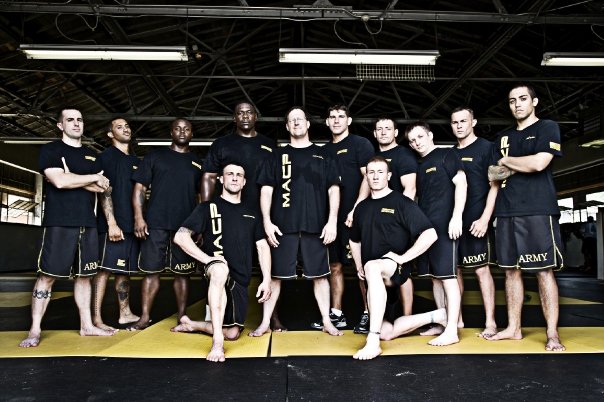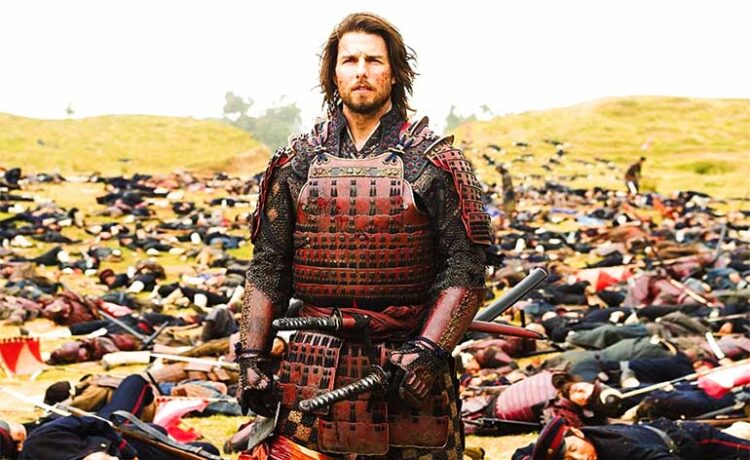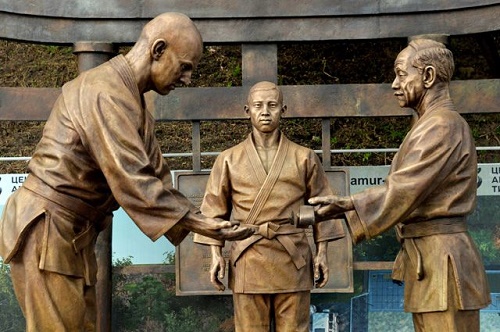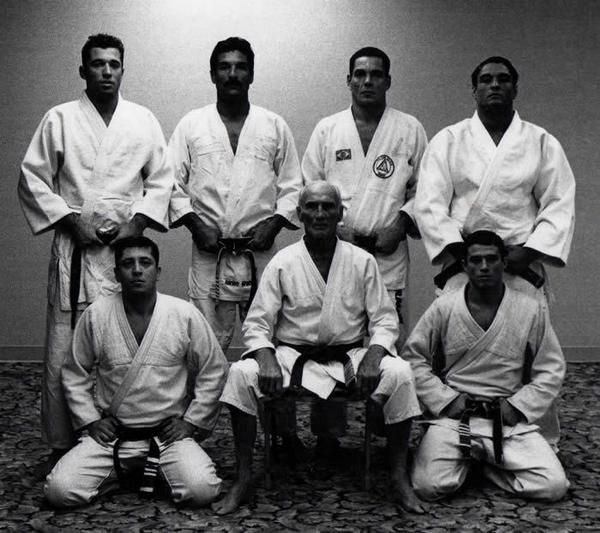Martial arts respond to evolutionary pressures.
I just wrote this for a discussion group on Jiu-Jitsu but considering, I thought some of you might be interested.
ALL martial arts start because someone sees the need to not only learn how to fight better but to pass on that knowledge. As long as the students are engaged in real fights on the regular, they stay focused on that. However, in mostly peaceful societies that seldom holds for long. Then they start to change. Just as in biological evolution, martial arts teachers either produce offspring or they do not. Their offspring differ from them because their experiences and training will not be the same, even if they are trying to replicate what the teacher taught.
The things that make them changed can be said to be causing evolutionary pressure. The things that exert this evolutionary pressure can be classified and the results can be understood. As a case study we can consider Judo, SOMBO and BJJ. All three share the same root, Jigoro Kano. So why are they different?
To start, Kano learned Jiu-Jitsu starting just a couple of years after the Satsuma Rebellion. You may remember the movie The Last Samurai. That was based upon true historical events that took place in 1877. Kano opened the Kodokan in 1882, when he was 22 years old. He later became the dean of the University of Tokyo and eventually the minister of education. Because he understood the value that western educations systems placed on sports as an educational tool, and lacking the concept of sport in Japanese culture, he reformed the Jiu-Jitsu he learned into Judo to make it a better educational tool for teaching good character. In other words, the purpose of the martial art changed and along with that change, the focus of training and eventually the art itself changed away from a focus on winning real fights. It is worth mentioning that the oldest Kata in Judo, Koshiki-no-kata, about throws with armor. Two of Kano’s students were Mitsuyo Maeda, the Gracie family’s teacher, and Vasiliy Oshchepkov, the Judo second dan who was one of the founders of Russian SOMBO. Judo was still known as Kano Jiu-Jitsu until after both of them had left Japan and started teaching in Brazil and Russia respectively. The art evolved differently in both places because of the different evolutionary pressures in the two different environments.
Oshchepkov primarily taught the Russian military. An example of how this effected the art is that in military leadership emphasized competition but thought chokes were too dangerous to do competitively. Chokes were still taught, but not allowed during competitions. It is important to remember that this was before any of the three styles of competition had decided on the rule sets or scoring mechanisms that we know today. If you cannot choke, what is the purpose of taking the back? So SOMBO competitors did not bother to take the back. If no one takes the back, why would you learn how to defend it? So SOMBO evolved without the back mount as a thing, offensively or defensively. The other major differences are also because of the evolutionary pressure of the competition rules. With very little pressure to follow tradition, wrestling style posture became the norm and different throws became more developed. Also, Kano’s Judo had leg attacks, so SOMBO allowed them in competition and they remained as well developed as the rule set made practicable for achieving victory.
Meada left Japan for the specific purpose of spreading Judo. In doing so he fought challenge matches, just like the ones Teddy Roosevelt sponsored at the White House when he was president. Meada brought that method of marketing to his students, the Gracie family, who continued to use it. Their version of the art began to focus more and more on the techniques that were useful in these matches. Over time, BJJ became almost exclusively focused on ground grappling, to the extent that many practitioners avoid training takedowns at all, and BJJ tournaments, which are not put on by an institution like the Army that can impose rules but were completely voluntary for all participants, decided on rules that allow people to do what they like and avoid what they don’t like.
US forces outlawed martial arts training in Japan in the wake of WWII. Judo people convinced them to allow it by selling it as a sport. It became focused on being in the Olympics and the rules were focused on making it exciting for the crowd. The ground grappling became increasingly limited for that reason and soon most of what was known about ground grappling fell by the wayside. Interestingly there is a parallel in freestyle wrestling where victory could be attained by submission until the 1936 Olympics. The next Olympics were in 1948 and submissions were eliminated. The entire wrestling world stopped training on what had become superfluous techniques.
An interesting corollary to all of this was when Rorion Gracie brought challenge matches back in the form of the UFC. The first few events had the rules that had been used by the Gracie family. The pressure of pay per view changed everything. After the match between Royce Gracie and Dan Severn went over the pay-per-view time slot, forcing them to repay the money subscribers had paid, they initiated time limits. Time limits, however, had the effect of making it possible to stall your way to a tie. Witch necessitated judges. With judges you no longer had to win. You simply had to be better in the opinion of the judges when time ran out. The fights also became very boring so referees were allowed to stand the fighters up. There were a few fights where this was clearly the factor that decided victory, for example Conan Silveira’s defeat by Maurice Smith in Extreme Fighting 3. Rounds were the answer to make the standups appear natural. In UFC 1, of the four semifinalists, three had broken hands. Four-ounce gloves became the norm because they allowed for more safe striking and became required because striking makes for a more exciting fight for the fans. There are several more examples, like not being able to kick a downed opponent because American fighters didn’t know how to stand in base and the new martial art of MMA, completely focused on victory within the cage, and the unified rules evolved.
Evolution is descent with change. Each generation of martial artists either produce another generation or they do not. If they don’t their art dies. If they do, the students will reflect their own experience which will be changed from their teacher because of the pressures on them both. In a system like wrestling where coaches work for the school system and the demand is to produce a limited number of champions who can perform within a proscribed rule set, the pressures are quite different from a commercial school where a teacher’s income is dictated by keeping the most students. The products will be different because of the difference in pressures and over time they will change the art.
Hopefully, these examples have made my point clear. Martial arts evolve over time according to the pressures placed upon them by their environment. Most martial artists, even the top-level teachers and practitioners, have very little understanding of even their own martial art, much less others. I was actually working on a book on this topic before I switched jobs.
Matt Larsen
Matt Larsen is a former United States Marine, United States Army Ranger and Black Belt Magazine Hall of Fame combatives instructor. He is known as “The Father of Modern Combatives”, credited with the creation of the United States Army‘s modern combatives doctrine and the establishment of the U.S. Army Combatives School. Larsen is also a Evolutionary Psychologist specializing in Combat Psychology, and is currently the Director of Combatives at the United States Military Academy at West Point.
Larsen enlisted in the United States Marine Corps as an infantryman in 1984. He was stationed overseas in Kanagawa Prefecture, Japan with the Marine detachment at Naval Air Facility Atsugi. During this time Larsen began training in judo, Shotokan karate, and traditional boxing. He continued his training in martial arts when he was transferred to Okinawa with the 3rd Battalion 5th Marine Regiment. He trained in Shōbayashi Shōrin-ryū with Eizo Shimabukuro and continued his judo training. He also trained Sayoc Kali in the Philippines. During this time Larsen fought in the Japan Karate Association‘s All Japan Karate Championships, Muay Thai bouts in Thailand, and a bare-knuckle fight against the ROK MarinesTaekwondo champion. He was also a member of the 3rd Marine Division‘s boxing team.
Upon his discharge from the Marine Corps, Larsen enlisted in the United States Army. He went on to join the 75th Ranger Regiment, where he would remain for the next 14 years. Initially assigned to 1st Ranger Battalion at Hunter Army Airfield, Larsen parachuted into Panama with the Rangers during Operation Just Cause and was also involved in Ranger operations during the Gulf War. He began to involve himself more in combat sports and served as the president of the 1st Ranger Battalion’s practical shooting club. Upon his reassignment to the 2nd Ranger Battalion, he started the Battalion’s practical shooting club. He soon found himself as the Non-Commissioned Officer in Charge of combatives and Close Quarters Battle (CQB) training for the battalion. He utilized his martial arts training, having attained black belts in several disciplines including Brazilian Jiu-jitsu under Romero “Jacare” Cavalcanti and Russian Sambo, and merged them into a single, effective fighting style. As the program grew more elaborate, he became the NCOIC of combatives and CQB training for the entire 75th Ranger Regiment. During his service with the Rangers, he established himself as the Army’s subject matter expert on combatives. When the opportunity to shape the Army’s Combatives program came, he transferred to the Ranger Training Brigade, which was charged with the development of the combatives doctrine. During this time, he refined his training methods and started to compile a comprehensive training manual.
Larsen was asked to move to the 11th Infantry Regiment to design a combatives instructor training course for their cadre. As the 11th Infantry Regiment would soon have a more rigorous training regimen, taught by the Army’s subject matter expert on combatives, the proponency for combatives doctrine moved with him. His ideas were well received by the 11th Infantry Regiment and he found himself with an old warehouse that he utilized as a combatives training facility. Within a short time, the school became so successful that units from throughout the Army began sending their soldiers. Several new courses had to be developed in order to continue teaching beyond the initial course, with the idea of building programs within these units. Eventually the school was recognized by the Army as the “United States Army Combatives School”. In 2002, the training manual which he had been working on since his time with the Ranger Training Brigade was published by the Army as Field Manual 3–25.150 (Combatives).
In March 2005, Larsen was inducted into the Order of Saint Maurice at the Centurion level.
Follow our regular channel at Spotterup on YouTube
Follow our WEBSITE
Follow on Instagram
Visit our STORE
*The views and opinions expressed on this website are solely those of the original authors and contributors. These views and opinions do not necessarily represent those of Spotter Up Magazine, the administrative staff, and/or any/all contributors to this site.
Originally published Jan 3, 2021 at 13:27




